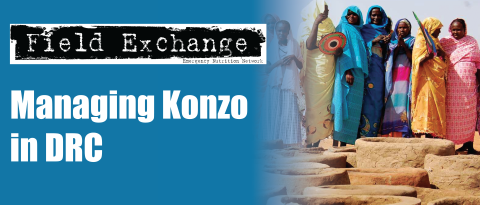Review of evidence of role of nutrition in HIV infection
Summary of published research1

A HIV infected mother and HIV infected child receive a voucher that entitles her to a month's supply of CSB and household food items
In 2007 there were an estimated 33 million people living with HIV. Sub-Saharan Africa accounted for 67% of all people with HIV and 75% of all AIDS deaths. The prevalence of HIV in the sub-Saharan Africa region is 6%. Although the number of new infections worldwide has stabilised since 2000, the number of people living with HIV has increased because of HIV treatments that are extending survival. Antiretroviral therapy (ART) is becoming more readily available across sub-Saharan Africa but the nutritional situation, which was already poor, is worsening further for certain vulnerable populations in the face of the global economic crisis.
A recent review examines the evidence for the relationship between HIV infection and malnutrition in adults in resource-limited settings. There were a number of key findings.
Adequate nutritional status supports immunity and physical performance. Weight loss caused by low dietary intake (loss of appetite, mouth ulcers, food insecurity, malabsorption and altered metabolism) is common in HIV infection. Regaining weight, particularly muscle mass, requires ART, treatment of opportunistic infections, consumption of a balanced diet, physical activity, mitigation of side effects, and perhaps appetite stimulants and growth hormone. Correcting nutritional status becomes more difficult as infection progresses.
Studies document widespread micronutrient deficiencies among HIV-infected people. However, supplement composition, patient characteristics, and treatments vary widely across intervention studies. Therefore, the World Health Organisation (WHO) recommends ensuring intake of Recommended Nutrient Intake (RNI) of each required micronutrient, which may require taking micronutrient supplements.
Few studies have assessed the impact of food supplements. Because the mortality risk in patients receiving ART increases with lower body mass index (BMI), improving the BMI seems important. Whether this requires provision of food supplements depends on the patient's diet and food security. It appears that starting ART improves BMI and that ready-to-use fortified spreads and fortifiedblended foods further increase BMI (the effect is somewhat less with fortified-blended foods). The studies are too small to assess effects on mortality.
Once ART has been established and malnutrition treated, the nutritional quality of the diet remains important, in part because of ART's long-term metabolic effects (dyslipidemia, insulin resistance, obesity). Food insecurity should also be addressed if it prevents adequate energy intake and reduces treatment initiation and adherence (due to the opportunity costs of obtaining treatment and mitigating side effects).
The authors draw a number of conclusions. Nutrition assessment, education and counselling should start immediately after the diagnosis of HIV infection. Whether the nutrition advice can be put into practice, however, depends on availability of and access to food, including animal-source and plant-source foods. Where ingredients for a balanced diet are not available or accessible due to food insecurity and poverty, provision of food supplements may be considered. Providing cash or other livelihood support can also be considered, but it is important that this results not only in increased caloric intake but also in improvement of the nutritional quality of the diet. The relationship between nutrition and HIV infection is very complex and is modified by factors such as nutritional status, including wasting or weight loss and micronutrient deficiencies, HIV disease stage, other physiological factors, and diet. The management of HIV disease therefore requires a combination of medical treatment, nutrition assessment, education and counselling, food supplements where necessary, and ongoing monitoring of outcome followed by adjustment of medical treatment and nutrition management.
1De Pee. S and Semba. R (2010). Role of nutrition in HIV infection: Review of evidence for more effective programming in resource-limited settings. Food and Nutrition Bulletin, vol 31, no 4 (supplement), pp S313-s337. 2010
Imported from FEX website


